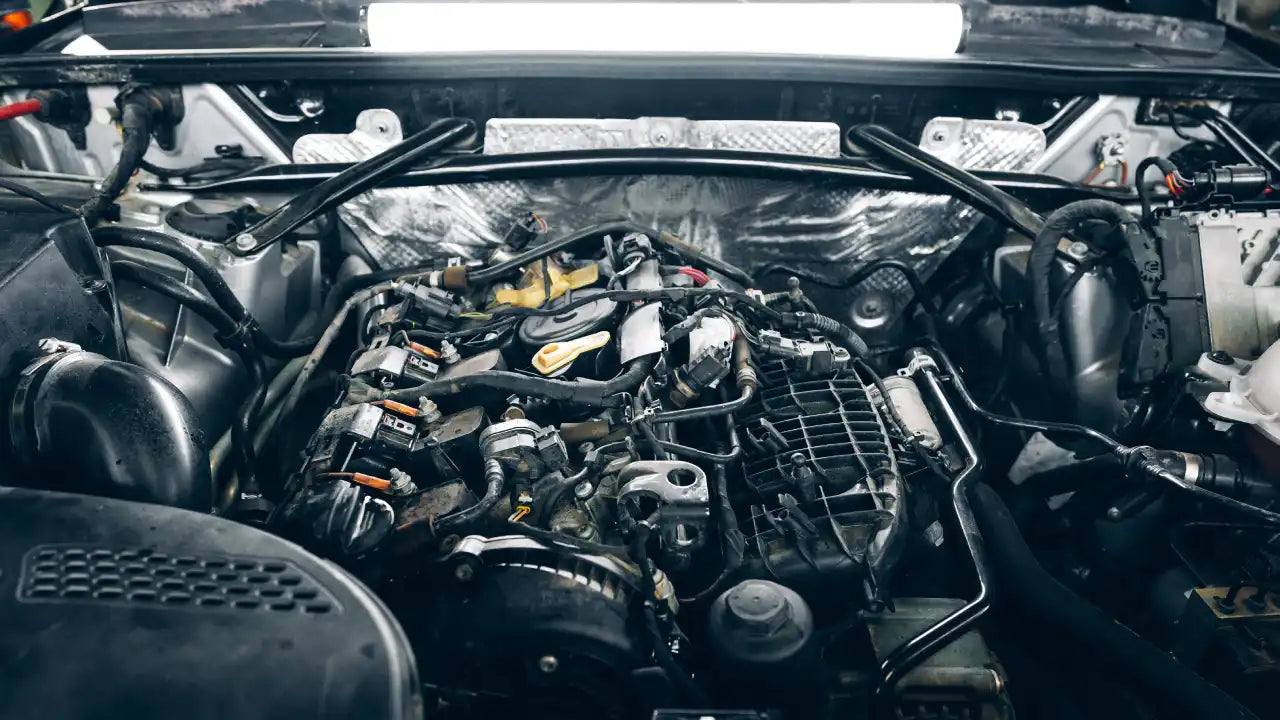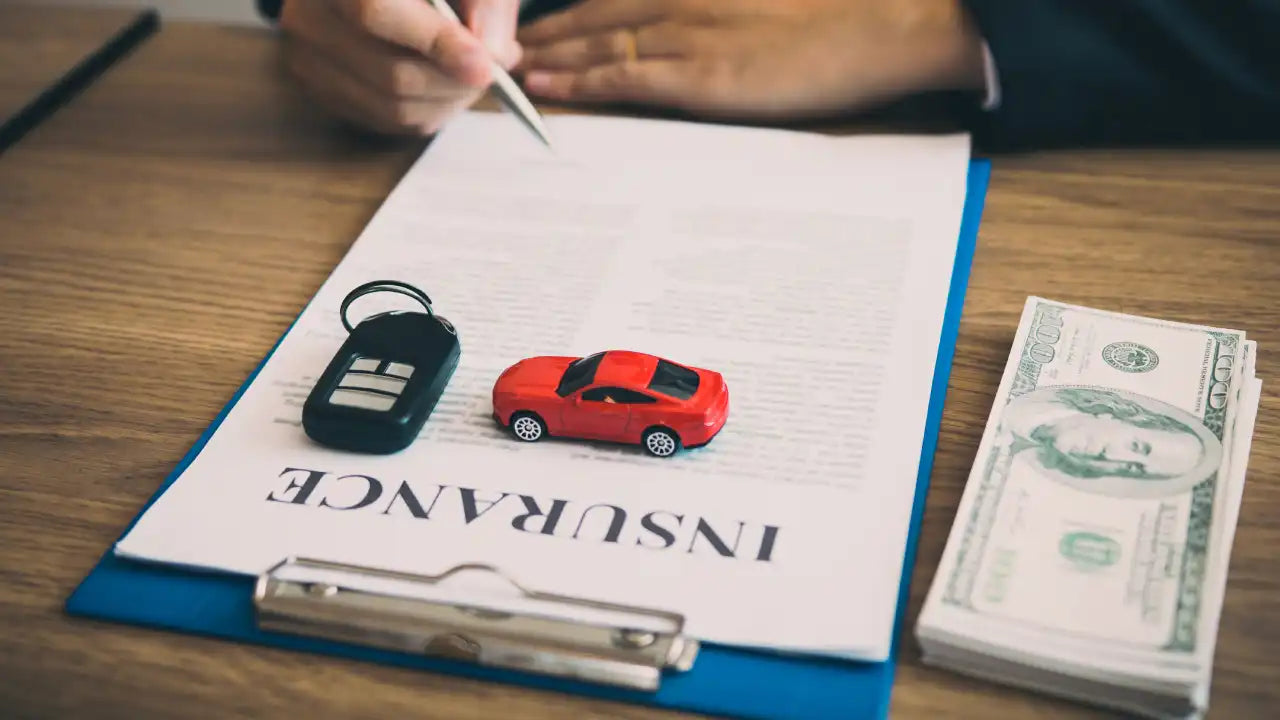Ressentir une chute soudaine de la puissance du moteur en conduisant peut être très frustrant, et c’est définitivement un signe auquel il faut prêter attention. Si votre voiture a du mal à accélérer, hésite lors des changements de voie ou ne répond pas bien en montée, comprendre la cause est vraiment important pour votre sécurité, assurer de bonnes performances et économiser de l'argent. Ce guide vous présente les symptômes, les causes les plus courantes, les étapes de diagnostic (parfait pour les bricoleurs) et des conseils pour prévenir une perte soudaine de puissance à l'avenir.
Que signifie « Perte soudaine de puissance de la voiture » ?
D'abord, il est utile de clarifier les termes. « Perte de puissance » ne signifie pas toujours que le moteur s'arrête complètement. Parfois, cela signifie :
-
La voiture semble lente et hésite lorsque vous appuyez sur l'accélérateur
-
Le moteur monte dans les tours, mais la vitesse n'augmente pas proportionnellement
-
La voiture cale ou manque de caler
-
La perte se produit sous charge (par exemple, en montée, en portant du poids), mais peut ne pas se manifester au ralenti
-
Les voyants d'alerte ou les indicateurs de gestion moteur s'allument

Pourquoi agir rapidement ?
Retarder le diagnostic ou la réparation lorsqu'une perte de puissance apparaît peut entraîner des pannes mécaniques plus graves. Par exemple, un catalyseur ou un FAP (filtre à particules diesel) bouché peut provoquer une contre-pression dans le moteur, une surchauffe ou des dommages aux capteurs. Une alimentation en carburant faible sous contrainte peut endommager les injecteurs ou la pompe à carburant elle-même. Des capteurs défectueux ou des problèmes électriques, s'ils sont ignorés, peuvent propager les problèmes à d'autres systèmes. Traiter la cause principale rapidement protège la fiabilité du véhicule, améliore l'efficacité énergétique et évite des factures de réparation importantes.
Signes avant-coureurs de perte de puissance dans les véhicules
Comprendre les signes avant-coureurs de perte de puissance dans les véhicules peut aider les conducteurs à résoudre les problèmes mineurs avant qu'ils ne deviennent majeurs.
-
Accélération lente : Des filtres à air bouchés, des injecteurs de carburant encrassés ou des bougies d'allumage endommagées sont souvent la cause des difficultés de la voiture à prendre de la vitesse ou de sa sensation de "lourdeur" lorsque l'accélérateur est enfoncé.
-
Ratés d'allumage ou ralenti irrégulier : Le moteur tremble, hésite ou tourne de manière irrégulière au ralenti, généralement causé par des bougies d'allumage défectueuses, des bobines d'allumage ou des problèmes d'alimentation en carburant.
-
Efficacité énergétique réduite : Une chute soudaine de la consommation en miles par gallon peut indiquer que le moteur a du mal à fonctionner efficacement, souvent à cause de capteurs d'oxygène défectueux, de problèmes de capteur de débit d'air massique ou d'une charge mécanique supplémentaire.
-
Voyant de contrôle moteur allumé : Cet avertissement indique que le diagnostic embarqué du véhicule a détecté une panne, qui peut aller de problèmes mineurs comme un capteur défectueux à des problèmes graves.
-
Calage ou hésitation en conduisant : Le moteur cale, s'arrête ou répond avec retard à l'accélération, souvent causé par une pompe à carburant défaillante, des problèmes de capteur de position de papillon ou des problèmes de recirculation des gaz d'échappement (EGR).
-
Bruits étranges du moteur (cliquetis ou cognements) : Des bruits inhabituels lors de l'accélération indiquent souvent une combustion incorrecte, l'utilisation de carburant à faible indice d'octane ou des problèmes internes au moteur.
-
Difficulté à monter les côtes ou à transporter des charges lourdes : La puissance réduite du moteur devient perceptible lorsque le véhicule est soumis à une contrainte, signalant des problèmes potentiels d'alimentation en carburant, d'admission d'air ou de compression moteur.
-
Fumée à l'échappement (noire ou bleue) : La fumée noire indique un excès de carburant, tandis que la fumée bleue signale une combustion d'huile ; les deux sont des signes d'inefficacité ou de dysfonctionnement du moteur.
-
Accélérateur non réactif ou réponse retardée : Le moteur réagit lentement à l'accélérateur, ce qui peut être dû à des problèmes de commande électronique des gaz, des problèmes d'alimentation en carburant ou des restrictions d'admission d'air.
-
Vibrations ou secousses lors de l'accélération : Une livraison de puissance inégale, des supports moteur usés ou des cylindres qui ratent peuvent faire vibrer la voiture de manière notable lors de l'accélération.

Systèmes clés qui causent souvent une perte soudaine de puissance
Pour diagnostiquer efficacement, vous devez savoir quels systèmes tombent souvent en panne. Voici les principaux suspects :
-
Système d'alimentation en carburant : pompe à carburant, filtre à carburant, injecteurs, conduites de carburant
-
Admission d'air & capteurs : filtre à air, capteur de débit massique d'air (MAF), capteur de pression absolue du collecteur (MAP), durites de vide
-
Système d'allumage & électrique : bougies d'allumage, bobines d'allumage, alternateur, batterie, câblage/connecteurs

Causes courantes de perte soudaine de puissance en conduite
En s'appuyant sur des ressources de diagnostic automobile, voici les coupables fréquents d'une perte soudaine de puissance et les indices que vous pouvez observer :
Problèmes de pompe ou filtre à carburant
Lorsque l'alimentation en carburant est faible, vous remarquerez une perte de puissance, surtout sous charge. Par exemple, une pompe défaillante peut fournir assez de carburant au ralenti mais pas lors d'une accélération. Un filtre à carburant bouché provoque des symptômes similaires ; le moteur peine à obtenir suffisamment de carburant quand vous appuyez à fond sur la pédale.
Problèmes de flux d'air et dysfonctionnements des capteurs
Des filtres à air sales ou bouchés restreignent le flux d'air, des capteurs comme le MAF ou le MAP signalent mal l'air entrant, ou des fuites de vide introduisent de l'air non mesuré. Cela conduit l'unité de contrôle moteur (ECU) à gérer un mélange air-carburant trop riche ou trop pauvre, provoquant hésitations, ratés ou pertes de puissance.
Faiblesses du système d'allumage
Des bougies d'allumage usées ou des bobines d'allumage défaillantes provoquent des étincelles irrégulières ou faibles. Sous charge, le moteur rate ses explosions, perd son rythme et devient mou. Une batterie faible ou un alternateur défaillant aggravent les problèmes électriques sous charge, les lumières s'atténuent, les capteurs reçoivent une alimentation instable et le contrôle moteur en souffre.
Restrictions d'échappement ou d'émissions
Les catalyseurs bouchés ou les FAP obstrués créent une contre-pression, rendant l'évacuation des gaz d'échappement plus difficile. Le moteur travaille alors plus dur, perd en efficacité, la chaleur s'accumule et la puissance chute drastiquement, surtout à haut régime.
Défaillances mécaniques à l'intérieur du moteur
Une faible compression (due à des segments usés, des soupapes qui fuient ou un joint de culasse soufflé) limite la capacité du moteur à générer de la puissance. Des problèmes de courroie ou chaîne de distribution désalignent aussi le calage des soupapes, ce qui provoque des inefficacités ou des cycles de combustion erronés. La surchauffe ou des problèmes de lubrification aggravent l'usure et accélèrent les pannes.
Erreurs de contrôle électronique et de capteurs
Les moteurs modernes dépendent de la surveillance ECM/ECU. Si un capteur (arbre à cames, vilebrequin, papillon, température) fournit des relevés hors des plages attendues, l'ECU peut réduire les performances (mode dégradé) pour éviter des dommages. Des connecteurs ou capteurs mal câblés ou corrodés, ou mal fixés sous charge (chaleur / vibration) causent souvent des pertes de puissance intermittentes.
Problèmes de transmission ou de groupe motopropulseur
Même si le moteur tourne bien, si la puissance n'est pas correctement transmise aux roues, vous remarquerez une perte. Les symptômes incluent un régime moteur élevé sans augmentation de vitesse, des difficultés à changer de vitesse, et des problèmes d'embrayage glissant ou de convertisseur de couple.
Que faire en cas de perte soudaine de puissance de la voiture sur la route
Lorsque vous ressentez une perte de puissance en conduisant :
-
Ne paniquez pas ; gardez le contrôle.
-
Relâchez l'accélérateur, réduisez la vitesse et déplacez-vous sur une bande d'arrêt d'urgence ou une zone latérale sûre si possible.
-
Allumez les feux de détresse.
-
Regardez le tableau de bord : des voyants d'alerte (Check Engine, batterie, huile, etc.) restent-ils allumés ?
-
Si les charges non essentielles (climatisation, radio, lumières) épuisent le système, éteignez-les et voyez si les performances s'améliorent légèrement.
-
Si le moteur tourne encore, vous pouvez essayer de le redémarrer ou voir si le contrôle revient. Mais si la voiture est instable, cale ou boîte, ne forcez pas. Il vaut mieux appeler à l'aide que risquer d'autres dommages.

La feuille de route diagnostique intelligente : comment identifier le problème
Lorsque votre voiture perd de la puissance, prenez simplement une profonde inspiration et réfléchissez étape par étape. Voici une petite feuille de route amicale pour vous aider à comprendre ce qui se passe :
-
Notez quand cela se produit : Cela se produit-il lors d'une forte accélération ? En montant des côtes ? Ou même à grande vitesse sur l'autoroute ? Observer les conditions aide à réduire les causes potentielles.
-
Vérifiez les voyants du tableau de bord : Si les voyants de contrôle moteur ou de transmission s'allument, ne les ignorez pas. C'est la façon dont votre voiture vous dit que quelque chose ne va pas, et ils peuvent vous donner des indices précieux.
-
Écoutez et ressentez les indices : Les ratés du moteur, les vibrations inhabituelles ou les bruits étranges peuvent tous indiquer la source de la perte de puissance.
-
Utilisez un outil de diagnostic si vous en avez un : Un scanner OBD-II peut extraire les codes d'erreur de votre véhicule, vous orientant vers des problèmes de carburant, d'allumage ou de capteurs. Même un simple scan peut vous faire gagner des heures de recherche.
Habitudes d'entretien qui préviennent la perte de puissance
La plupart des baisses soudaines de puissance peuvent être évitées avec un entretien régulier. Voici quelques habitudes qui font une grande différence :
-
Gardez votre système de carburant en bonne santé : Un carburant vieux ou sale peut étouffer votre moteur. Remplacez les filtres à carburant selon le calendrier et envisagez d'utiliser de l'essence de haute qualité.
-
Faites attention à l'allumage : Des bougies d'allumage usées, des bobines d'allumage défectueuses ou des fils effilochés peuvent tous provoquer des ratés et réduire la puissance du moteur. Les vérifier régulièrement évite les surprises.
-
N'oubliez pas le flux d'air : Votre moteur a besoin d'air propre. Des filtres à air bouchés ou des systèmes d'admission obstrués peuvent priver votre moteur de performance.
-
Surveillez les fluides et les courroies : Un faible niveau d'huile moteur, de liquide de transmission ou de liquide de refroidissement peut affecter la puissance. Assurez-vous que les courroies et les tuyaux ne sont pas usés ou fissurés.
Ces petites habitudes peuvent sembler routinières, mais elles sont le meilleur moyen d'éviter une perte de puissance quand vous vous y attendez le moins.

Quand faire appel à un professionnel
Parfois, il est préférable de laisser un mécanicien qualifié gérer le problème. À long terme, les mécaniciens peuvent économiser de l'argent et du stress en identifiant rapidement les problèmes complexes et en empêchant des dommages supplémentaires. Vous devriez demander une assistance experte si :
-
La perte de puissance est persistante ou sévère
-
Votre voiture cale ou fait des bruits inhabituels
-
Les voyants d'alerte réapparaissent malgré les contrôles de routine
-
Vous vous sentez en insécurité en conduisant à cause de la perte de puissance
Une perte soudaine de puissance en conduisant peut être effrayante, mais c'est généralement un avertissement, pas une catastrophe. En observant votre voiture, en assurant un entretien régulier et en sachant quand appeler un professionnel, vous pouvez protéger à la fois votre véhicule et votre sécurité. Un peu d'attention aujourd'hui évite de gros problèmes demain et maintient votre voiture en bon état à chaque kilomètre.











